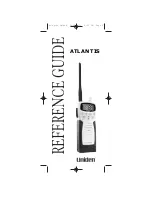
WiNRADiO G33DDC User’s Manual
119
your mon
itor with a ‘quieter’ one, or you can try to relocate your antenna
further away from your computer.
While the
WiNRADiO Excalibur Pro
receiver has been designed to minimize
interference-related problems, switched-mode computer power supplies
sometimes still present a challenge. This type of interference would usually
enter the receiver as
common-mode noise
, which means that the noise is in
the same phase on both the active and shielding conductors of the antenna
lead.
A good remedy to try is to wind five to ten turns of the antenna lead-in cable
through a large ferrite core (the doughnut shaped
toroid
type), near the PC
end of the cable. This suppresses the
common-mode interference,
which is
a typical but curable problem with PC-controlled receivers.
A most effective remedy is the WiNRADiO
WR-CMC-30 Common-Mode
Choke
(see
www.winradio.com/cmc30
), which is well proven to cure most
common-mode interference problems. In extreme cases, two or more chokes
can be used, placed strategically along the antenna lead where suitable
grounding points exist.
Long wire antennas, while most commonly used, also appear to be most
susceptible to problems related to ground loops. If you encounter such
problems, we would also suggest experimenting with
magnetic loop
antennas
which do not require grounding at all.
Another type of interference which you may encounter is
intermodulation
interference
. This is usually caused by strong local stations, whose
frequencies combine to create ‘ghost’ signals on frequencies which are
arithme
tic combinations of the stations’ frequencies. These ‘ghost’ signals can
sometimes coincide with useful frequencies, rendering them partially or
completely unusable. They will usually disappear when you enable the
Attenuator
. In most cases, intermodulation interference in the shortwave band
is caused by a strong local MW station and the most effective remedy is to
simply engage the
MW filter
which is available in the
Excalibur Pro
.








































